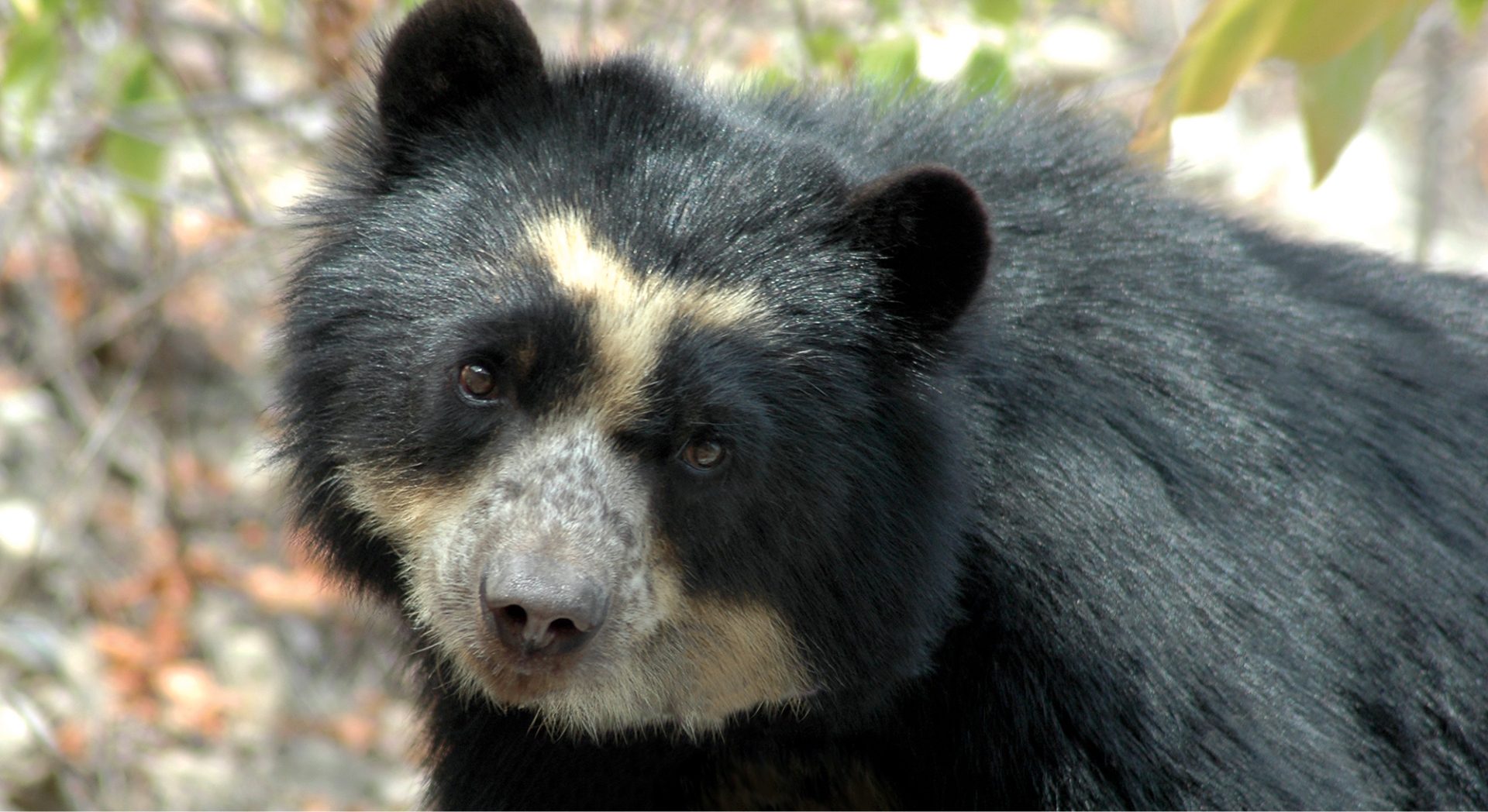MAKE A GIFT TO PROTECT THE ONLY BEAR IN SOUTH AMERICA
![]()


Spectacled bears are the least known bear species in the world. We need current data on bear behavior and habitat use to develop effective conservation management plans.
Our research is filling the knowledge gap on spectacled bears in the wild. Our research helps us understand bear population size and demographics, life cycle, reproductive behavior, food ecology and critical resources needed for survival (like food, water and denning sites). In addition to identifying new populations and assessing habitat use of spectacled bears, our research also benefits the highly threatened mountain tapir. We identified a previously unknown mountain tapir population in 2015 when we expanded our study area from equatorial dry forest into higher elevation montane forest.
Our field data guides our programs by identifying prime habitat and key areas, like waterholes and sapote trees, that need protection and providing information to educate communities on their local environment.
We also share our research findings and collaborate with the broader scientific community, conservation organizations, academic institutions and governments to maximize our conservation impact for spectacled bears and other wildlife.
Read more about our research findings in our Publications
We believe that collaboration is the key to accomplishing more, and we are always seeking new research partnerships.
Local Expertise
We have trained a team of local residents in research methods and data collection. Our field team is legendary for conducting scientific investigation in challenging terrain. They also spend time sharing their expertise and knowledge about the environment with local communities through our Forest Guardians program and training local park wardens to raise awareness about conservation.
Direct Observation
Most of our research data has been obtained thanks to the passion and dedication of our field team. Our team spends days in the field looking for signs of bear and tapir presence, collecting fur and scat for DNA testing, interviewing locals about animal sightings and maintaining our network of camera traps.
Camera Traps
We set up camera traps in areas where we identify bear and tapir presence. These cameras are our eyes in the forest and help us monitor bears without disturbing them. Camera traps are triggered by movement, they snap ten photos per trigger and are active 24 hours a day. We collect and analyze the photos on a monthly basis to count and monitor individual spectacled bears.
Technology
We fit spectacled bears with GPS collars that allows us to track their home range and habitat use and we use drones and satellite imagery to collect data on critical aspects of bear habitat.

We are collecting data on spectacled bears in the wild that is unique in the world.
Open terrain in the equatorial dry forest provides high visibility and perfect conditions for bear research. The arid climate preserves signs of bear presence (like tree markings and scat) and concentrates bear activity around a few scattered water holes. Direct observation research in montane forest is more challenging because of lush vegetation, steep climbs and heavy cloud cover.
SBC founder, Robyn Appleton and local animal tracker Javier Vallejos discover spectacled bears after eight months of searching in the equatorial dry forest.
The field team begins the first ever observational study on wild spectacled bears in Peru and collars “Laura”, the first spectacled bear fitted with a GPS collar.
The team discovers the first active spectacled bear natal den in the wild.
SBC opens the conservation center in Batan Grande.
SBC’s research shows extremely high cub mortality, drawing international attention.
Laura’s death, attributed to malnutrition or disease, is a devastating loss for the field team and for future research.
Research expands into high elevation ecosystems. SBC discovers undocumented bear and mountain tapir populations.
Peru’s spectacled bear conservation strategy is released.
Laura is immortalized on Peruvian currency.
Wildfires destroy high elevation habitat and cause flooding in the dry forest; staff homes and camera traps are lost.
SBC’s 6-year bear reproduction study is in the Journal of Zoology.
SBC completes a novel 10-year study on age-specific survival probability. This is the first long-term study of spectacled bears in the wild yielding previously unknown ecological information about the species in the wild that is needed to make effective conservation plans.
![]()